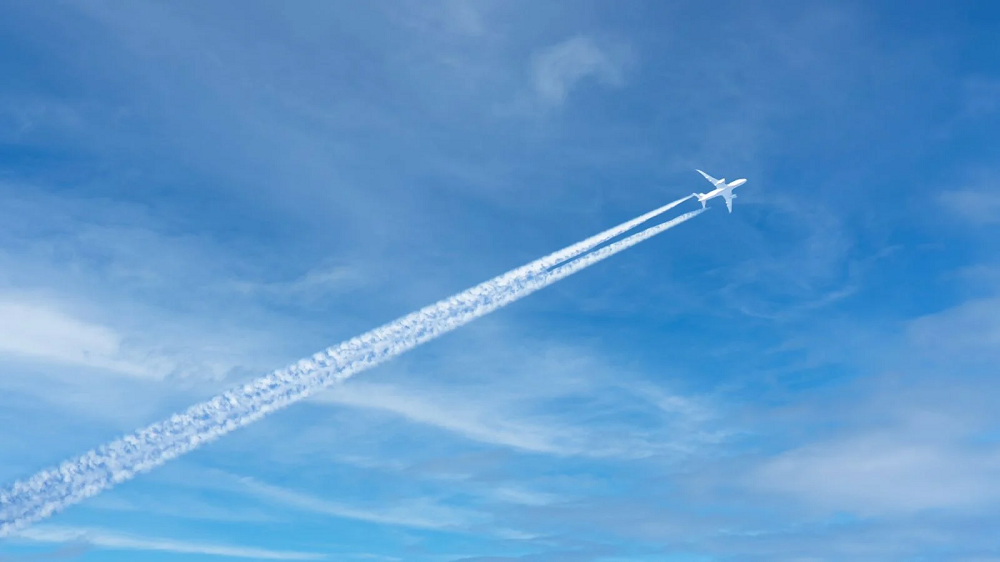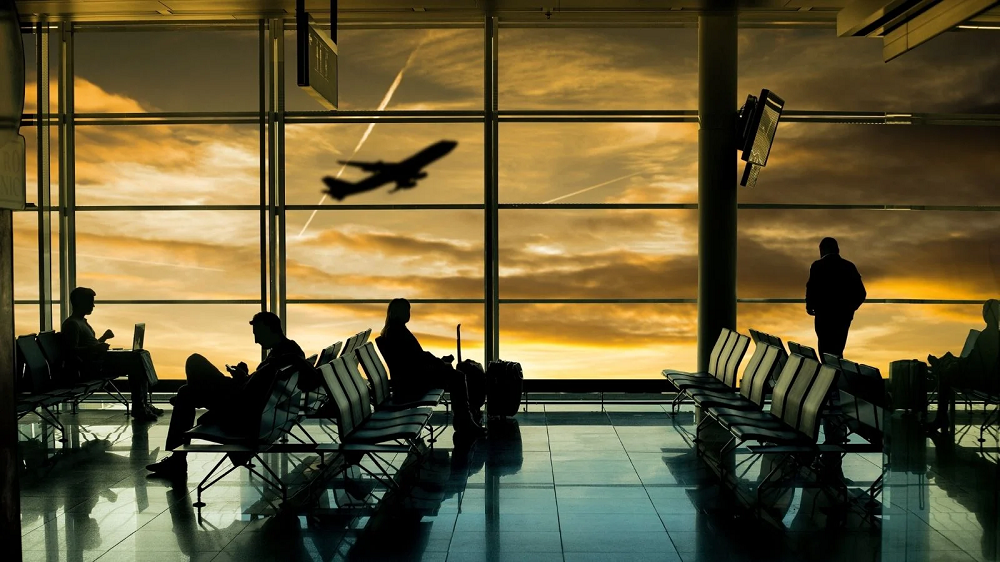As a Global Data Partner of the World Travel Market (WTM), the Head of Market Intelligence, Juan Gomez, has been invited to present at WTM LATAM this week in Sao Paulo on April 6 on the Travel Tech stage. Here are a few points the Head of Market Intelligence shall share in his presentation on the LATAM Travel Outlook for 2022 – to catch the whole presentation and live panel discussion with ProColombia and Emprotur Brazil, make sure you register to attend.
Spain is among the most sought-after destinations in the world by tourists for this Easter, as highlighted in the presentation of travel forecasts to Spain made last Friday, 1 April 2022 by the Ministry of Industry, Commerce and Tourism and ForwardKeys, the leading global travel intelligence and data company. “The year 2022 has started with a sustained recovery in tourism, as shown by the data from the hotel occupancy survey with 24.1 million overnight stays between January and February, 72% of the pre-pandemic level, or the employment data recorded in February.
Tracking airline capacity has, for a long time, been the best measure of what has happened through the Covid-19 pandemic, but nothing beats looking at the forward booking data. In this piece of analysis, we have compared both forward bookings and airline capacity as reported in the first days of March in 2021 and 2022 to gauge how strong the travel recovery is shaping up. The results are startling!
Hotel performance has remained stable in most of Europe amid the war in Ukraine, and countries bordering the conflict area have seen a refugee-driven lift in occupancy. Using standard methodology, which excludes temporary closures from the pandemic, Europe’s hotel occupancy hasn’t dipped below 53% on a running 7-day basis since late February. The latest data for 20 March showed occupancy above 58%. When indexed to 2019, levels over the last few weeks have not fallen below 77% of the pre-pandemic comparables and came in above 80% on 20 March.
The first week of the season is like a typical April day, a bit of sunshine, some cloud and some ugly showers! On the positive side of the equation global airline capacity has increased back to 83.4 million, an increase of 2.6 million or 3% week-on-week. This growth had the potential to be even higher, but airline capacity in China fell by 10% (just over a million more seats) as further lockdowns impacted available airline capacity. The cloudy side of this week’s flight data is buried in the forward-looking airline capacity for the next three months in which 28 million seats have been removed through to June with over 12 million in April alone.
The U.S. hotel industry posted its highest weekly occupancy since the end of summer 2021 with a level of 66.9% during the week of 13-19 March 2022. Boosted by Spring Break and NCAA March Madness, one-fifth of the 166 STR-defined U.S. markets reported their highest occupancy of the past 32 weeks with 12 markets achieving pandemic-era highs. For a second consecutive week, average daily rate (ADR) increased by more than 4%, pushing the weekly level 14% higher than the 2019 comparable.
Leisure travel continues to be particularly strong in the U.S. as spring kicks into gear, and the biggest hotel performance wins recently have come in those U.S. markets that are traditional Spring Break destinations. At the same time, major urban centers are seeing some return of transient business demand along with increases in group bookings. Since last month’s update, travelers have continued to seek relief and respite in warmer or winter-fun locales, as shown by hotel performance data for the four weeks ending 12 March 2022.
Two years ago, global airline capacity fell off a cliff; 21 million seats were cut in the space of seven days representing a 24% reduction, the Covid-19 pandemic was gathering pace and markets around the world were closing rapidly. Today, global capacity has settled at 82 million seats a week, an aviation recovery of sorts but still 22% below the same week in 2020 - although for the optimistic amongst you that is a 39% increase on this time last year. It seems that things are heading in the right direction, but as we expected the journey to recovery will not be without some bumps along the way and perhaps from events that we had not anticipated.
U.S. hotel weekly occupancy slipped a bit in the most recent week of reporting (27 February-5 March 2022), falling to 61.2% from 62.2% the week prior. While all attention is focused on rising gas prices and the potential impact on hotel demand, this week’s decrease was due to a weaker Sunday as the previous Sunday benefited from the Presidents’ Day holiday. Excluding Sunday, occupancy for the remaining six days reached 63.2%, the highest six-day result in the country since mid-November.
In its second public analysis since the outbreak of war, ForwardKeys compared flight bookings in the week following the invasion, 24th Feb – 2nd Mar, to the previous seven days. Excluding Ukraine and Moldova, which closed their air space, and Russia and Belarus, which were subjected to flight bans and safety warnings, the destinations worst affected were generally those closest to the conflict. Bulgaria, Croatia, Estonia, Georgia, Hungary, Latvia, Lithuania, Poland, Slovakia, and Slovenia all saw a 30% – 50% collapse in bookings.
Today we bring you our latest market report, Travel Trendlines. It features data stories on 2021’s top Travel apps*, including which are the fastest-growing and why. The insights come from U.S. performance data for travel apps in the following categories: OTA (Online Travel Agencies), Hotels, Airlines, Vaccine Passports, Car Rental and Cruise Line apps. Highlights include Hopper overtaking Airbnb to lead market share among OTAs by monthly active users (MAUs).
Los Angeles hoteliers enjoyed a strong lift but underperformed due to the Omicron impact. Since 2011, STR has analyzed the top-line hotel performance impact for the Super Bowl host city, both in terms of absolute performance and year-over-year change. As usual, STR also made a prediction about Los Angeles hotel performance weeks before the event, forecasting revenue per available room (RevPAR) of US$396 for the weekend of the big game (Friday-Sunday).
The latest data from ForwardKeys reveals that the Russian invasion of Ukraine prompted an instant spike in flight cancellations to and from Russia. On 25th February, the day after the start of the invasion, every booking that was made for travel to Russia was outweighed by six cancellations of pre-existing bookings. The source markets exhibiting the highest cancellation rates, in order of volume, were Germany 773%, France 472%, Italy 152%, the UK 254%, India 285% and Turkey 116%.
The last week’s events in Europe have been deeply concerning for an industry still struggling to recover from the Covid-19 pandemic and we will continue to monitor the situation closely. Global capacity this week is slightly up on last week as we predicted at 82.1 million, another 1% growth on the previous seven-day period as we march into March. That weekly figure does however include some 103,000 seats from the Ukraine that airlines have yet to remove from the distribution systems or continue to show as planned but, are closed for sale to all but the very brave hearted.
The escalation of events in the Ukraine are a tragic development at all levels for people around the world and the responses have been quick from Governments. Inevitably aviation takes another hit and one country’s actions are normally followed by a swift response from the other, as we have seen today. Yesterday the United Kingdom banned Aeroflot from operating but did not stop Aeroflot’s ability to overfly UK skies. This morning, Russia not only banned UK domiciled carriers from operating, but banned them from overflight access.
Driven by the Presidents’ Day holiday weekend, U.S. leisure travel made a big comeback and pushed occupancy 4.6 percentage points to 59.1% during the week of 13-19 February 2022. That was the highest level of the past 13 weeks and the second consecutive week in which occupancy expanded by more than four percentage points from the previous 7-day period. The demand expansion was somewhat widespread as 40% of the 166 STR-defined U.S. markets reported weekly occupancy of 60% or more.
The hardest-hit New York City is bouncing back once again as Omicron cases continue to rapidly fall at the same speed they increased in mid-December and New Yorkers look forward to enjoy the city as it was before the pandemic. ADVAN’s foot traffic data shows an uptick in foot traffic mobility overall however the trends differs from area to area. For example, foot traffic in fashionable SoHo started to increase significantly the first weekend of this month after the Omicron wave started to subside in the second half of January.
STR’s latest 28-day visuals show markets collectively getting closer to their seasonal performance expectations. The leaders and laggards are highlighted in the “bubble” charts below with averages covering the four weeks ending 12 February. Among the Top 25 Markets, four of five leaders have recently outpaced their comparable revenue per available room (RevPAR) from 2019. Miami had the top four-week RevPAR (US$203) and a RevPAR index score of 104 (4% above the 2019 comp) after hitting 161 last month.
The last two years have challenged the airline industry in so many different ways - incredible network planning, financial engineering and then re-engineering, and of course considerable disruption to thousands of careers and businesses. The professionalism of the industry has never been in doubt but last Friday’s events in Europe where aircraft were landing into some of the strongest winds recorded were incredible; to those that were handling the aircraft well done, to those sitting further back, phew! In so many ways those images that travelled around the globe reflect the skill and robustness of an industry that has been stressed and tested.
There are a host of elements that impact luxury hotel performance. The segment relies on a healthy mix of leisure and corporate travel—spendy families paying top-dollar room rates and the C-suite on healthy per diems. Above all, the luxury hotel segment relies on stability, something not indulged over the past two years. It’s been a protracted pandemic to be sure, and just as the world appeared to be rounding the corner on the Delta variant, along came Omicron—a rowdy interloper arriving to a party all hoped was winding down. And though the intrusion was noisy at first, Omicron could potentially be more insipid than insidious.































































